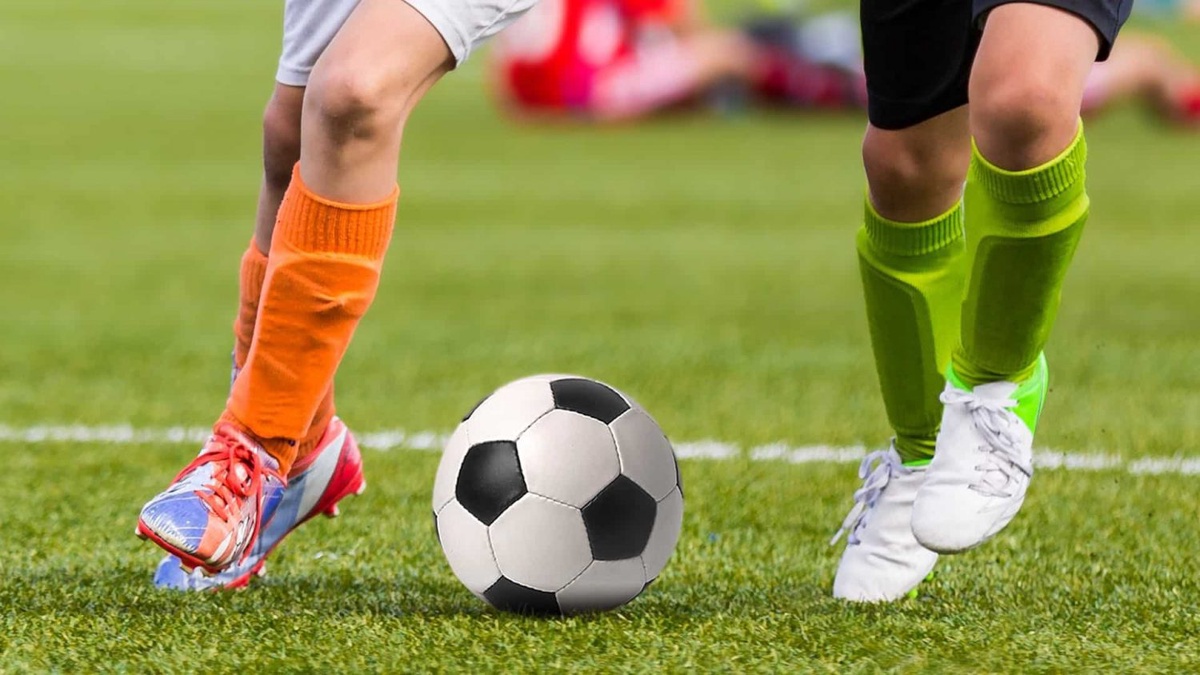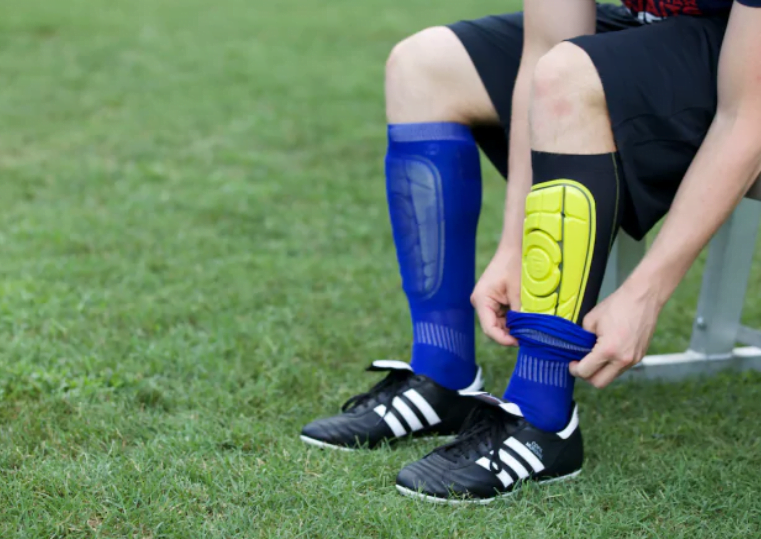Shin guards, also known as shin pads, are a crucial piece of protective equipment worn by athletes in a wide range of sports. Their primary function is to shield the shins, the flat area on the front of the lower leg, from impacts and injuries.
This article delves into the world of shin guards, exploring their history, types, materials, benefits, and proper fitting techniques. We'll also explore the specific uses of shin guards in various sports, helping you choose the right protection for your chosen activity.
A Historical Perspective: From Greaves to Shin Guards
The concept of protecting the shins dates back centuries. In medieval warfare, soldiers wore greaves, pieces of armor made from metal, leather, or wood, to shield their shins from sword blows and other battlefield hazards. The term "shin guard" itself is derived from the Middle English word "greve," meaning shin or shin armor.
The modern shin guard emerged in the late 19th and early 20th centuries with the rise of organized sports like football (soccer) and cricket. Early shin pads were often rudimentary, made from leather or padded cloth. Over time, materials and designs evolved to incorporate advancements in shock absorption and comfort.
Today, shin pads are constructed from high-tech materials like plastic, foam, and synthetic fabrics, offering superior protection while remaining lightweight and flexible.
Types of Shin Guards: Variety for Different Needs
Shin guards come in various types to cater to the specific demands of different sports and player preferences. Here's a breakdown of the most common types:
- Sleeve style: These shin pads resemble long socks with a hard plastic or foam insert on the front for shin protection. They offer a snug fit and good flexibility.
- Ankle guards: Similar to sleeve styles, these extend further down the leg to provide additional ankle protection.
- Separate shin and calf guards: These offer more adjustability, with separate pieces for the shin and calf areas. This allows for a more customized fit and better breathability.
- Impact shorts: Primarily used in sports like baseball and softball, these integrate shin pads into padded compression shorts, offering protection for the thighs, hips, and shins.
Additional Considerations:
- Shin guard closure: Shin protectors utilize various closure mechanisms like straps, velcro, or elastic sleeves to ensure a secure and comfortable fit.
- Shin guard thickness: The thickness of the padding can vary depending on the sport and the player's preference. Thicker padding offers more protection but can be less flexible.
Materials for Shin Guards: Optimizing Protection and Comfort
The materials used in shin guards play a vital role in their effectiveness and comfort. Here's a look at the most common materials:
- High-density polyethylene (HDPE): A hard plastic material that provides excellent impact absorption.
- Polypropylene (PP): Another plastic option that's lighter and more flexible than HDPE.
- EVA foam: This closed-cell foam offers good shock absorption while remaining lightweight and breathable.
- Neoprene: Often used as a liner for comfort and moisture management.
- Nylon and polyester fabrics: Used for the outer shell to provide durability and breathability.
The choice of material often depends on the trade-off between protection and comfort. Players in high-impact sports might prioritize thicker HDPE padding, while those in sports with less contact may prefer lighter PP or EVA foam options.
The Benefits of Wearing Shin Guards: Investing in Safety
Shin pads offer a multitude of benefits for athletes across various sports. Here are some key advantages:
- Reduced risk of injury: Shin pads act as a barrier against impacts, significantly reducing the risk of cuts, bruises, and shin splints.
- Increased confidence: Knowing your shins are protected can boost your confidence and allow you to play more aggressively.
- Improved performance: By alleviating the fear of injury, shin protectors can help athletes focus on their game and improve their performance.
- Psychological benefit: The physical barrier of shin pads can provide a sense of security and reduce anxiety during gameplay.
- Compliance with regulations: In many sports, shin protectors are mandatory equipment, ensuring player safety as per league or competition rules.
Choosing the Right Shin Guards: Fit is Key
Finding the perfect shin pads goes beyond just material and style. Proper fit is crucial for optimal protection and comfort. Here's what to consider when choosing shin protectors:
- Size: Shin pads come in various sizes to accommodate different leg lengths. It's essential to choose shin guards that cover the entire shin area from just below the knee to the top of the ankle.
- Snugness: The shin pads should fit snugly but not restrict movement. They shouldn't slip or bunch up during gameplay.
- Comfort:Choose shin protectors that are comfortable to wear for extended periods. Consider factors like breathability, weight, and the lining material. Look for shin guards with moisture-wicking fabrics to keep your legs cool and dry during exercise. Additionally, opt for shin pads with a comfortable lining to prevent chafing and irritation.
Shin Guard Care and Maintenance:
Just like any other athletic equipment, shin guards require proper care and maintenance to ensure their effectiveness and longevity. Here are some tips for keeping your shin pads in top condition:
- Cleaning:Wipe down your shin pads with a damp cloth after each use to remove dirt, sweat, and grime. You can use a mild soap solution for tougher cleaning needs. Allow the shin protectors to air dry completely before storing them. Never put them in a dryer, as the heat can damage the materials.
- Storage:Store your shin pads in a cool, dry place away from direct sunlight. Avoid storing them in damp environments, as this can promote mold growth.
- Inspection:Regularly inspect your shin protectors for any signs of damage, such as cracks, tears, or loose stitching. If you find any damage, it's time to replace your shin pads for optimal protection.
Shin Guards in Action: Protecting Athletes Across Sports
Shin pads are essential equipment in various sports, each with specific requirements. Here's a breakdown of how shin guards are used in some of the most popular sports:
- Football (Soccer):Shin pads are mandatory for all players in football. They protect the shins from kicks, tackles, and collisions with other players.
- Field Hockey:Similar to football, shin protectors are mandatory in field hockey to shield players from the impact of the ball and hockey sticks.
- Cricket:Cricketers wear lightweight shin pads to protect their shins from the cricket ball, which can be quite hard.
- Baseball and Softball:Catchers in baseball and softball wear shin pads as part of their protective gear to guard against foul balls. Baseball and softball players at other positions may also opt for shin guards for additional protection.
- Lacrosse:Lacrosse players, particularly attack and midfield positions, often wear shin guards to shield their shins from stick checks and stray throws.
- Rugby:While not mandatory, shin guards are becoming increasingly popular in rugby, especially among younger players, to protect against scrumming and rucking.
Conclusion: Shin Guards - A Vital Piece of Athletic Equipment
Shin guards are a crucial piece of protective equipment for athletes across a wide range of sports. By choosing the right shin guards, ensuring a proper fit, and maintaining them properly, you can significantly reduce your risk of injury and play your chosen sport with confidence. Whether you're a seasoned athlete or just starting out, investing in a good pair of shin guards is an investment in your safety and enjoyment of the game.



No comments yet